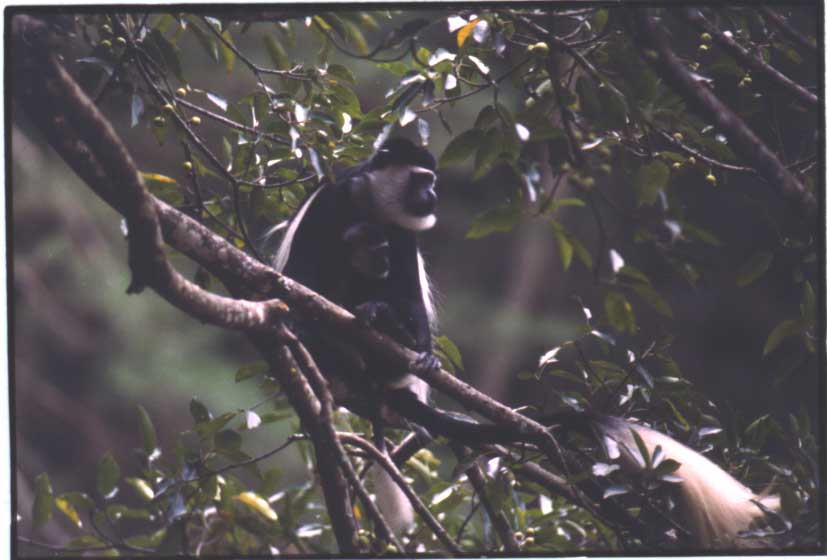The Behavioral Ecology of an African Colobine Monkey: Diet, Range Use, and Patterns of Intergroup Aggression in Eastern Black and White Colobus Monkeys (Colobus guereza)
I conducted a long-term study of the behavioral ecology of Eastern black and white colobus monkeys, or guerezas, (Colobus guereza), in the Kakamega Forest, Kenya. I found that guerezas at Kakamega were much more frugivorous than guerezas at other long-term study sites. Unlike in previous studies, guerezas at Kakamega preferred whole fruit over all other food items. The high level of fruit consumption and preference for fruit at Kakamega can be attributed to the high stem density of trees in the Moraceae family.

Guerezas at Kakamega spent a higher percentage of their day resting than any other colobine monkey studied to date. Aggression within groups was very rare, suggesting that there was little or no within-group contest competition.
The mean daily path length was 588 m and mean home range size was 16 ha for the 5 study groups. Mean daily path length did not increase with increasing group size, though the largest group did have by far the highest mean daily path length. There was probably little or no within-group scramble competition except perhaps in the largest group.
Home range overlap between groups was large, but groups still exhibited site-specific home range defense. Most intergroup encounters featured some aggression between groups. Adult males participated much more frequently in intergroup aggression than adult females. Results were consistent with the hypothesis that adult males played the role of "hired guns", defending food resources in parts of their home range for the adult females and immatures in their group, presumably in return for being tolerated in the group and being able to obtain mating opportunities with the group's females. Results were also consistent with the hypothesis that adult males also defended reproductive access to adult females during some intergroup encounters. Adult female participation in intergroup aggression was uncommon, though when they did participate, they defended access to frequently-entered quadrats, which may be a form of long-term food resource defense. The evidence that intergroup resource defense is carried out more by adult males than by adult females runs contrary to current socioecological theory.
Publications based on dissertation: see Peter's website.
-------------------------------------------------------------------
After finishing his degree, Peter was a postdoc at the Wildlife Conservation Society, and an adjunct faculty member in the Department of Ecology, Evolution and Environmental Biology at Columbia University. He then worked for several years as a conservation biologist and research scientist at the Pittsburgh Zoo, after which he joined the faculty at Cal State Fullerton.